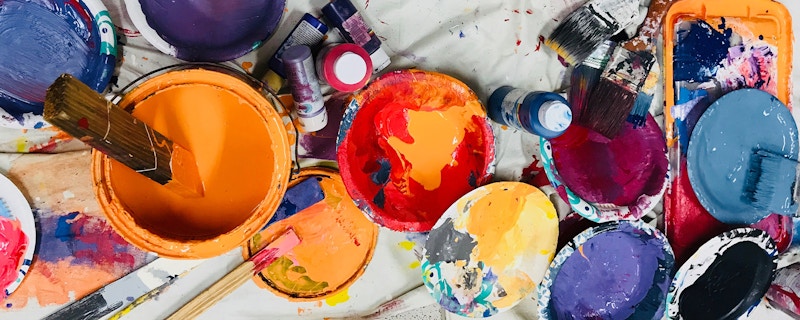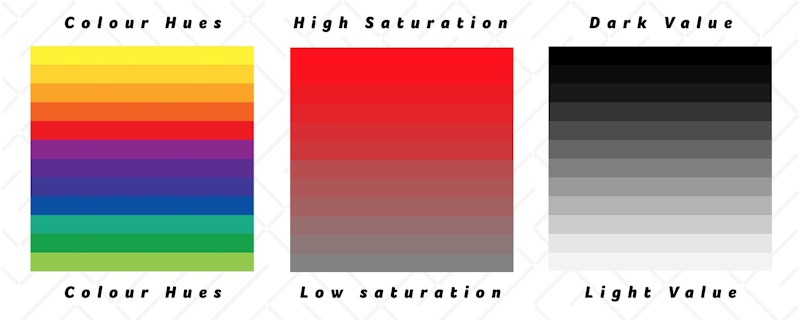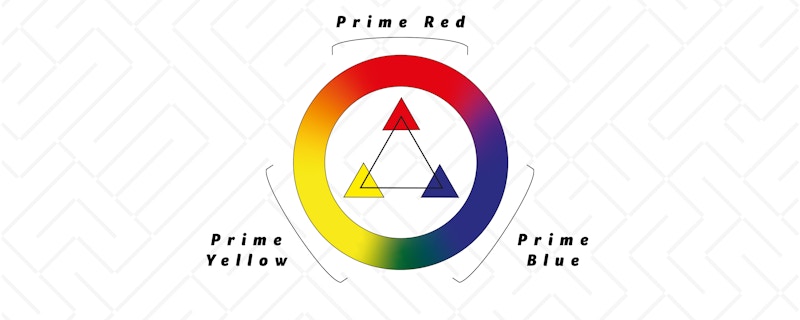When we look at something colourful, a lemon for instance, light is bouncing off of it’s surface. When it does that, some light is absorbed, and some light is reflected off. The light that is reflected off hits our eyes, our brain interprets it, and we see a colour. So something as bright yellow as a lemon, is predominantly absorbing all the colours apart from yellow.
The main principles of colour
There are three main principles of colour, Hue, Value and Saturation. Let’s talk briefly about each one.
Hue
Simply put, hue is just a fancy word for colour. As we know, every colour is a bracket of wavelengths which merges into other colours. In theory, somewhere in the middle of the bracket is a solid, pure colour.
This however is hard to pin down precisely as the colour spectrum is basically an infinite amount of hues with individual wave lengths. So, the idea of a pure red or blue is more of a mental one, as people’s idea of the true blue may be different. One person may be imagining Sky Blue, the other more of a Navy. These are both Blue but different sides of the blue spectrum.
You may of heard people talk about colour temperature. They may have said something like a warm red, or a cool blue. The diagram below goes a long way to describe it. This is the Hue continuum, it depicts two sides of a donut, the right side depicting cold with the left representing warm. Where these two sides meet is green and red. That is because both green and red transition into both warm and cold.



